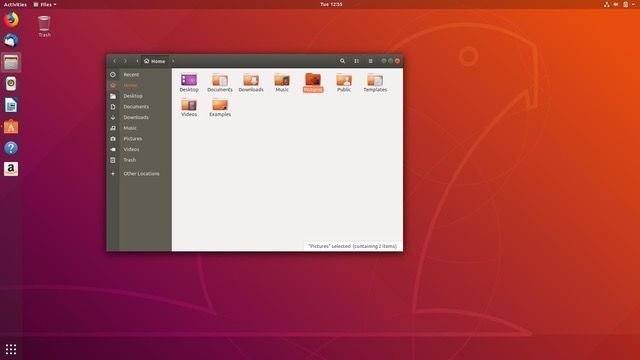A month ago I got fed up with Windows crashing, being slow and updates actually making it worse than better. I know I don't have the fastest PC in the universe, It's an old 2nd generation quad core i5, with 4 gigabytes of RAM and a mechanical drive, but this must be sufficient to run windows stand alone properly.
At start I used a Virtual machine to get started and I went for ubuntu, it was a nice distribution but very similar experience to windows, but I wanted to go more deep into and giving up some support because ubuntu is widely used.
 |
| Ubuntu User interface |
If you see the graph of Linux distributions in Wikipedia, there are some main core distributions that others derived from it. Friends recommended Fedora so I went for it.
Fedora is a redhat sponsored, Community driven distribution with an easy user interface and active community, that has a real Linux taste to it.
Getting started:
It wasn't hard, I live booted the OS from the flash drive and did my daily web browsing and typing, Changing date and time, background, the GUI was very good and buttery smooth. So I installed it on my main hard disk.As a daily driver:
My first usage of Linux terminal was updating the system, you might thing I went through a series of hack-like commands but no, it doesn't work like that. typing these phrases can help you a lot:- sudo dnf intstall <something>: obviously to install something.
- sudo dnf update: updating the packages(Apps) that are installed.
- sudo dnf remove <something>: Removing a specific package.
 |
| Updating all applications at once, very convincing |
The hard part:
Some apps like Adobe software don't run in Linux so you should run them in a windows virtual machine but I had dual boot so I used my pre-installed windows.A real usage for Linux is editing the core part of the OS dependent on your usage, installing themes, editing the kernel, and mostly developer work. for example some Linux distributions are only 750 MB in size so you can run them in super old laptops and PC's.
It takes time for your brain to understand what is going on the screen, if you come from a windows background. (like me 😊 )
Conclusion:
Pros:
- 100% editable, customizable from the kernel to GUI.
- Ultimate security, no one can spy on you unlike windows which instantly reports your data to Microsoft.
- One of developers favorites.
- Faster work done using Terminal.
- Works on literally any PC, light Linux versions can be installed on a single core processor.
- Supports x64_x86 , ARM, and many other CPU architectures so you can install them on PC's, Phones, and other stuff. (I saw someone that installed it on a nintendo)
Cons:
- Takes time to learn and master.
- Some applications are not supported like Adobe apps.
- Gaming is limited. (some game engines regret to work on it.)









0 comments:
Post a Comment